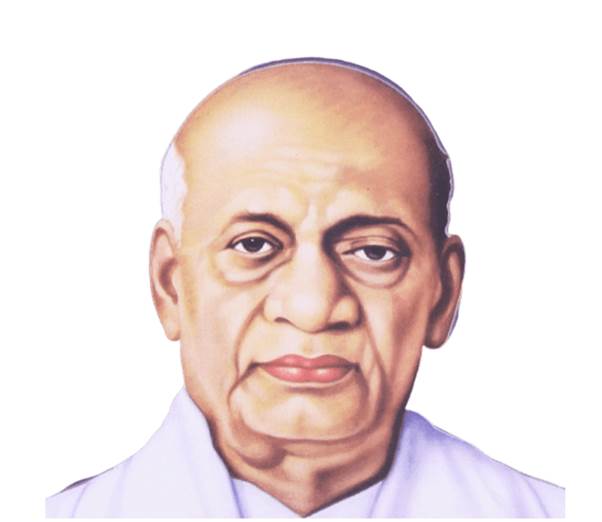CONTENTS
- Goa Maritime Conclave 2023
- Sardar Vallabhbhai Patel
Goa Maritime Conclave 2023
Context:
During his keynote address at the 4th edition of the Goa Maritime Conclave, the Defence Minister of India emphasized the importance of a ‘free, open, and rule-based’ maritime order, stating that the principle of ‘might is right’ has no place in this context. He underscored the need for establishing multinational collaborative frameworks to collectively address common maritime challenges in the Indian Ocean Region (IOR), highlighting that such a maritime order is a shared priority for all stakeholders in the region.
Relevance:
GS II: International Relations
Dimensions of the Article:
- Overview of the Goa Maritime Conclave (GMC)
- Key Highlights of the Defence Minister’s Speech
- Significance of the Goa Maritime Conclave 2023 (GMC 2023)
Overview of the Goa Maritime Conclave (GMC):
- The GMC serves as the Indian Navy’s outreach initiative, facilitating collaboration between maritime security practitioners and academia to promote outcome-oriented maritime discussions.
- Past editions were held in 2017, 2019, and 2021.
- The 4th edition of GMC is scheduled from October 29 to 31 and is organized by the Indian Navy in Goa through the Naval War College.
- Chiefs of navies, heads of maritime forces, and senior representatives from 12 Indian Ocean littoral nations are participating, including Bangladesh, Comoros, Indonesia, Madagascar, Malaysia, Mauritius, Myanmar, Seychelles, Singapore, Sri Lanka, and Thailand.
- The keynote address will be delivered by the Defence Minister of India, Rajnath Singh.
- The theme for GMC-23 is “Maritime Security in the Indian Ocean Region: Converting Common Maritime Priorities into Collaborative Mitigating Frameworks” with a focus on synergizing and collaborating maritime efforts for security in the IOR.
- Visiting delegates will have the opportunity to witness India’s indigenous shipbuilding industry at the “Make in India” exhibition and observe indigenous warships and the Deep Submergence Rescue Vessel (DSRV) capabilities.
Key Highlights of the Defence Minister’s Speech:
- Rejecting the principle of ‘might is right,’ the Defence Minister emphasized the need for a ‘free, open, and rule-based’ maritime order.
- He stressed the importance of adhering to international maritime laws, particularly the UN Convention on the Law of the Sea (UNCLOS) 1982, as a guiding framework.
- UNCLOS incorporates both traditional and new legal concepts for ocean use, serving as a comprehensive framework for the law of the sea.
- Deviating from established international law can undermine civilized maritime relations, jeopardizing common security and prosperity.
- Fair rules of engagement are vital for promoting collaboration and preventing the dominance of any one country in a hegemonic manner.
- The Defence Minister highlighted the shared challenges faced by nations, often referred to as “problems without a passport,” which include piracy, drug trafficking, terrorism, and arms smuggling.
- Addressing these challenges requires cooperation and collaboration among nations.
- He called for multinational collaboration in compiling and sharing surveillance data to combat Illegal, Unreported, and Unregulated (IUU) fishing, which poses threats to ocean ecosystems, sustainable fisheries, and regional and global food security.
- Such collaboration can help identify and counter actors engaged in irregular or threatening behavior in the maritime domain.
Significance of the Goa Maritime Conclave 2023 (GMC 2023):
- The conclave is taking place in a context of growing concerns over China’s increasing presence and influence in the Indian Ocean Region (IOR). It serves as a platform to address regional maritime challenges and strengthen security in the IOR.
- The forum’s primary goal is to foster regional solutions for regional issues, emphasizing the importance of collective efforts to address common maritime challenges.
- While there are larger regional constructs like the Indian Ocean Naval Symposium (IONS) and BIMSTEC, it can be challenging to reach a consensus on critical matters due to the larger membership and diverse interests. Smaller, focused gatherings like GMC offer an opportunity for quicker and more effective decision-making.
- The collaborative framework discussed at GMC can extend to various areas, including climate change. Participating countries can work together to reduce carbon emissions and promote sustainable practices to mitigate the impact of climate change in the maritime domain.
Sardar Vallabhbhai Patel
Context:
The President of India paid homage to Sardar Vallabhbhai Patel on his birth anniversary.

Relevance:
GS I- Modern History
About Sardar Vallabhbhai Patel
- Vallabhbhai Jhaverbhai Patel (31 October 1875 – 15 December 1950), popularly known as Sardar Patel, was an Indian politician.
- He was the first Home Minister and Deputy Prime Minister of Independent India.
- He played an important role in the integration of many Indian princely states to make an Indian federation.
- He took charge of the task to forge a united India from over 560 semi-autonomous princely states and British-era colonial provinces.
- Using frank diplomacy backed with the option (and the use) of military action, Patel’s leadership enabled the accession of almost every princely state.
- Hence, he is recognized as the real unifier of India.
- He is also remembered as the ‘Patron saint of India’s civil servants’ as he established the modern all-India services system. He is also hailed as the Iron Man of India.
- Patel was in charge of the Provincial Constitution Committee and the Advisory Committee on Fundamental Rights, Minorities and Tribal and Excluded Areas, in the Constituent Assembly of India.
- Since 2014, every year on 31 October ‘Rashtriya Ekta Diwas’ or the National Unity Day is observed to pay tribute to Sardar Vallabhbhai Patel – an Indian politician who played a pivotal role in India’s freedom struggle and then during the integration of the country.
- He was awarded the Bharat Ratna posthumously in 1991.
Statue of Unity
- The Statue of Unity which is built in honour of Sardar Vallabhbhai Patel is dedicated to the nation.
- The Statue of Unity is the tallest statue in the world at 182 metres.
- It is located on the Sadhu Bet island on the Narmada river, which flows between the Satpura and the Vindhya mountain ranges.




